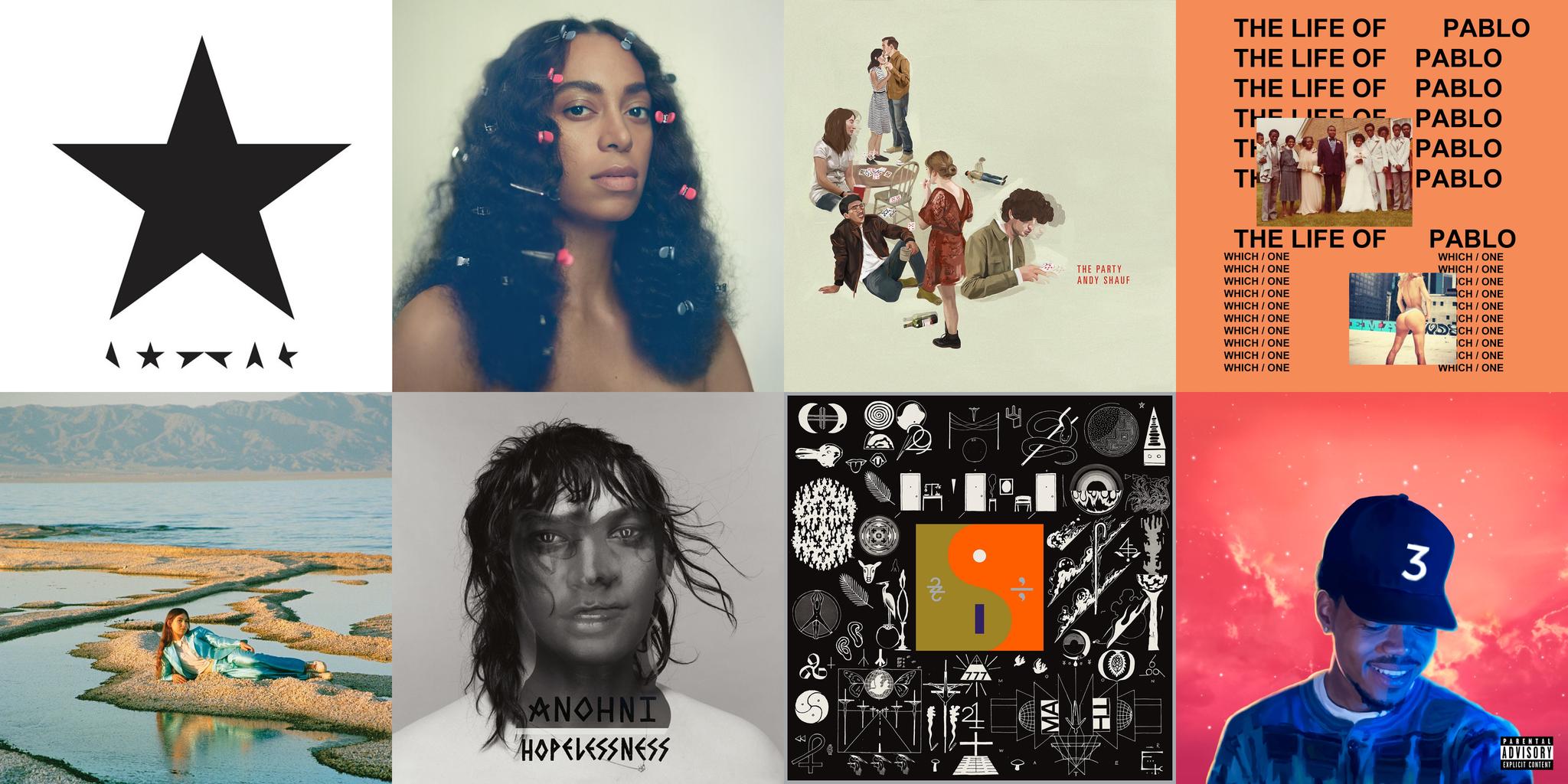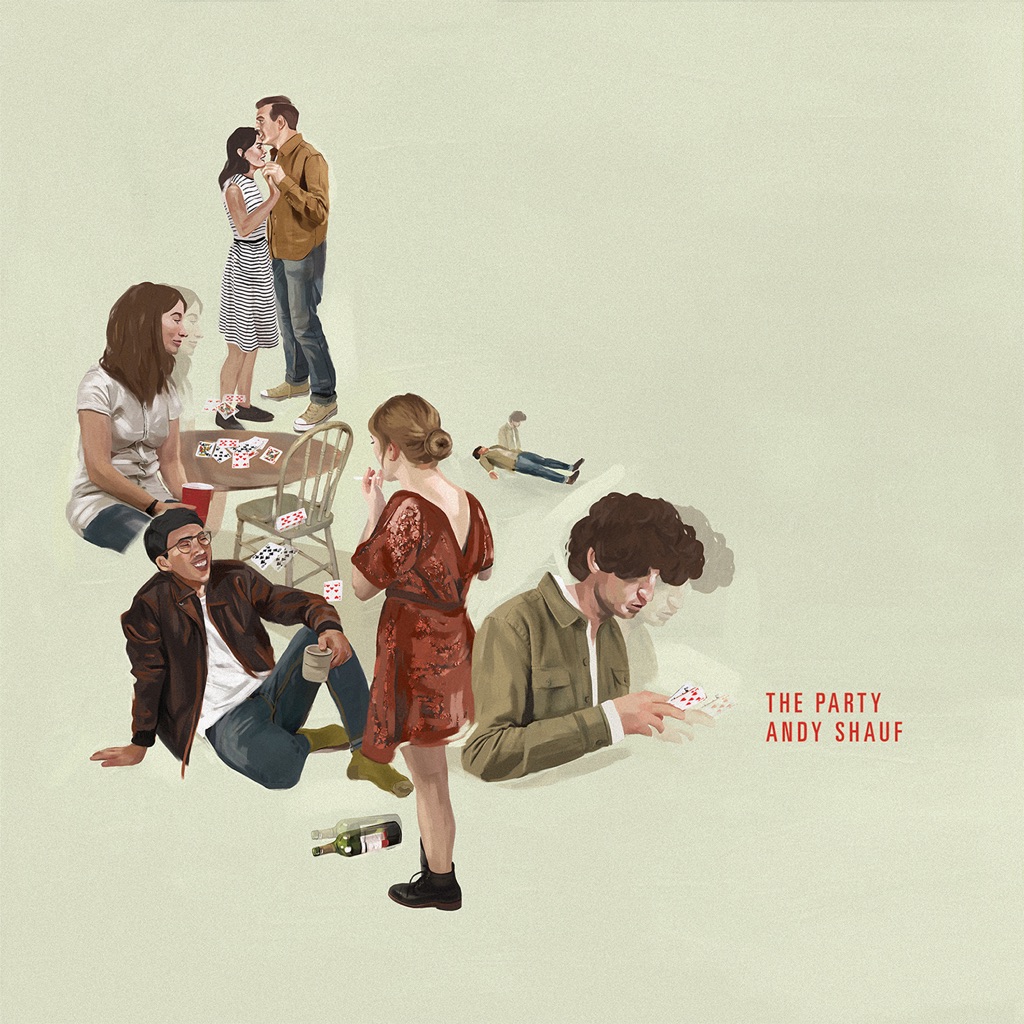
NOW Magazine's Top Albums of 2016
It's been an emotional year. Accordingly, the albums on our critics' collaborative list of the year's best are a bit anxious, a bit political, a bit gospel, a bit cosmic and a lot existential.
Published: December 16, 2016 14:26
Source


A confessional autobiography and meditation on being black in America, this album finds Solange searching for answers within a set of achingly lovely funk tunes. She finds intensity behind the patient grooves of “Weary,” expresses rage through restraint in “Mad,” and draws strength from the naked vulnerability of “Where Do We Go.” The spirit of Prince hovers throughout, especially over “Junie,” a glimmer of merriment in an exquisite portrait of sadness.

The third album by Saskatchewan\'s Andy Shauf sets after-hours stories to a doleful ‘60s songwriter vibe. Shauf plays the wallflower at his titular party, watching the guests\' movements: “The Magician” whose tricks fail, the girl dancing on her own on “Eyes of Them All”. He has an acute eye for uneasy social interactions, and captures them beautifully with off-kilter takes on classic ‘60s pop: the loose guitar on “The Worst in You”, and kitschy horns on “Quite Like You”.


The new Weyes Blood record, Front Row Seat To Earth, is the folk music of the near future. Natalie Mering, the being behind Weyes Blood, embeds her sublime song in a harmonic gauze of arpeggiated piano, acoustic guitar, druggy horns, and outer space electronics. Propulsive, spare drums carry us across the album’s course. There is a faded California beauty to Front Row. A gentle honesty that recalls the finest folk music made on the West Coast of the ‘70s. The hue hangs in the sweet-spooky harmonies, the pulsing sway of the vibrato, and the ecstatic chord resolves. It is the joyful release of energy as the song delicately unfolds from intro to extrospection. But this beauty is scratched with shadow; with dark foreboding, alienation, and acceptance of change. Love and loss balance together in suspended alchemy, as the earthiness of the singer-songwriter tradition wears digital sounds like feathers in its hair. Mering, together with co-producer Chris Cohen and some special guests, contrasts live band intimacy with the post-modern electric sheen of A.M. radio atmospherics. The experimental flourishes sparkle amid the succinct, thoughtful arrangements. The closeness of this record - how personal, alone, and frank it feels - conceals its aspirations to the outside, to the "Earth" of its title. Weyes Blood harbors devastating weight while also universalizing the strange ways of identity and relationships. These are not typical love songs or protest songs -- they are painful, poignant riddles that celebrate the ambiguity of love and affirm the conflict of harmonious life within a disharmonic world.

ANOHNI has collaborated with Oneohtrix Point Never and Hudson Mohawke on the artist's latest work, HOPELESSNESS. Late last year, ANOHNI, the lead singer from Antony and the Johnsons, released “4 DEGREES", a bombastic dance track celebrating global boiling and collapsing biodiversity. Rather than taking refuge in good intentions, ANOHNI gives voice to the attitude sublimated within her behavior as she continues to consume in a fossil fuel-based economy. ANOHNI released “4 DEGREES,” the first single from her upcoming album HOPELESSNESS, to support the Paris climate conference this past December. The song emerged earlier last year in live performances. As discussed by ANOHNI: "I have grown tired of grieving for humanity, and I also thought I was not being entirely honest by pretending that I am not a part of the problem," she said. “’4 DEGREES' is kind of a brutal attempt to hold myself accountable, not just valorize my intentions, but also reflect on the true impact of my behaviors.” The album, HOPELESSNESS, to be released world wide on May 6th 2016, is a dance record with soulful vocals and lyrics addressing surveillance, drone warfare, and ecocide. A radical departure from the singer’s symphonic collaborations, the album seeks to disrupt assumptions about popular music through the collision of electronic sound and highly politicized lyrics. ANOHNI will present select concerts in Europe, Australia and the US in support of HOPELESSNESS this Summer.

Bon Iver’s third LP is as bold as it is beautiful. Made during a five-year period when Justin Vernon contemplated ditching the project altogether, *22, A Million* perfects the sound alloyed on 2011’s *Bon Iver*: ethereal but direct, layered but stripped-back, as processed as EDM yet naked as a fallen branch. The songs here run together as though being uncovered in real time, with highlights—“29 #Strafford APTS,” “8 (circle)”—flashing in the haze.
'22, A Million' is part love letter, part final resting place of two decades of searching for self-understanding like a religion. And the inner-resolution of maybe never finding that understanding. The album’s 10 poly-fi recordings are a collection of sacred moments, love’s torment and salvation, contexts of intense memories, signs that you can pin meaning onto or disregard as coincidence. If Bon Iver, Bon Iver built a habitat rooted in physical spaces, then '22, A Million' is the letting go of that attachment to a place.

On this, his first masterpiece, Chance evolves—from Rapper to pop visionary. Influenced by gospel music, *Coloring Book* finds the Chicago native moved by the Holy Spirit and the current state of his hometown. “I speak to God in public,” he says on “Blessings,” its radiant closer. “He think the new sh\*t jam / I think we mutual fans.”

In the four years between Frank Ocean’s debut album, *channel ORANGE*, and his second, *Blonde*, he had revealed some of his private life—he published a Tumblr post about having been in love with a man—but still remained as mysterious and skeptical towards fame as ever, teasing new music sporadically and then disappearing like a wisp on the wind. Behind great innovation, however, is a massive amount of work, and so when *Blonde* was released one day after a 24-hour, streaming performance art piece (*Endless*) and alongside a limited-edition magazine entitled *Boys Don’t Cry*, one could forgive him for being slippery. *Endless* was a visual album that featured the mundane beauty of Ocean woodworking in a studio, soundtracked by abstract and meandering ambient music. *Blonde* built on those ideas and imbued them with a little more form, taking a left-field, often minimalist approach to his breezy harmonies and ever-present narrative lyricism. His confidence was crucial to the risk of creating a big multimedia project for a sophomore album, but it also extended to his songwriting—his voice surer of itself (“Solo”), his willingness to excavate his weird impulses more prominent (“Good Guy,” “Pretty Sweet,” among others). Though *Blonde* packs 17 tracks into one quick hour, it’s a sprawling palette of ideas, a testament to the intelligence of flying one’s own artistic freak flag and trusting that audiences will meet you where you’re at. In this case, fans were enthusiastic enough for *Blonde* to rack up No. 1s on charts around the world.